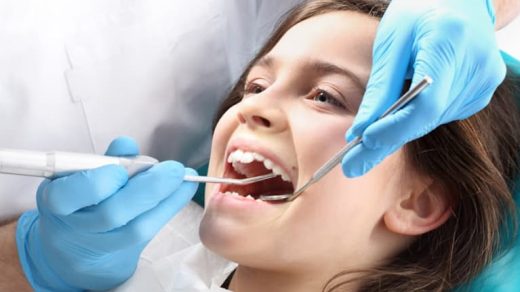Calcium buildup on teeth represents one of the most significant challenges in maintaining optimal oral health.
This comprehensive guide will explore the intricate details of what causes these deposits, how they affect your oral health, and most importantly, how to prevent and manage them effectively.
When we talk about calcium build up on teeth, we’re referring to a process where soft plaque transforms into hardened deposits, also known as tartar or calculus in dental terminology.
Understanding this condition is crucial because it affects nearly everyone at some point in their lives, regardless of age or overall health status.
The process begins innocently enough – small amounts of plaque accumulating on teeth surfaces.
However, when this plaque combines with minerals present in your saliva, particularly calcium and phosphate, it undergoes a transformation that creates rock-hard deposits that can only be removed by dental professionals.
The significance of addressing calcium buildup extends far beyond cosmetic concerns.
These deposits serve as breeding grounds for harmful bacteria, potentially leading to a cascade of oral health issues ranging from mild gum inflammation to severe periodontal disease.
Moreover, the presence of calcium buildup can make regular oral hygiene practices less effective, creating a cycle of increasing dental problems.
Understanding and Managing Calcium Buildup on Teeth

This guide will provide you with an in-depth understanding of calcium buildup, its implications for your oral health, and most importantly, practical strategies for prevention and management.
Whether you’re dealing with early signs of buildup or looking to prevent it altogether, the information provided will help you make informed decisions about your oral health care routine.
Signs and Symptoms
Early Detection and Warning Signs
The ability to recognize early signs of calcium buildup is crucial for preventing more serious dental complications. Early detection allows for timely intervention and can prevent the progression of minor issues into major dental problems.
Initial Visual Indicators:
- Yellowish or off-white spots near the gum line
- Slight discoloration between the teeth
- Visible film on tooth surfaces that returns quickly after brushing
- The dull appearance of teeth despite regular cleaning
- Slight roughness visible on tooth surfaces
Tactile Signs:
- Rough or fuzzy feeling when running your tongue over teeth
- Slight bumpy texture, especially near the gums
- Increased sensitivity when brushing certain areas
- Texture changes that persist after brushing
Early Stage Detection Table:
| Warning Sign | Description | Significance | Recommended Action |
| Color Changes | Yellowish tinge near gums | Early mineralization | Increase brushing frequency |
| Surface Texture | Slightly rough feeling | Beginning of hardening | Improve flossing technique |
| Gum Response | Mild tenderness | Early inflammation | Enhanced oral hygiene |
| Persistent Film | Quick plaque return | Active buildup process | Professional cleaning |
| Bad Breath | Mild but persistent | Bacterial activity | Antimicrobial rinse |
Advanced Symptoms and Complications
As calcium buildup progresses, more severe symptoms become apparent and can lead to various complications if left untreated.
Progressive Symptoms:
- Visible Changes:
- Dark or brown deposits on teeth
- Obvious calcified masses
- Visible gaps between teeth
- Gum recession
- Change in tooth position
- Oral Health Impact:
- Chronic bad breath resistant to treatment
- Bleeding gums during brushing
- Swollen, tender gum tissue
- Tooth sensitivity to temperature
- Loose teeth in advanced cases
Symptom Progression Table:
| Stage | Visual Signs | Physical Symptoms | Health Risks | Required Action |
| Early | Light deposits | Mild sensitivity | Gingivitis | Professional cleaning |
| Intermediate | Visible buildup | Gum inflammation | Early periodontitis | Deep cleaning |
| Advanced | Heavy deposits | Gum recession | Severe periodontitis | Periodontal therapy |
| Severe | Extensive buildup | Tooth mobility | Tooth loss | Immediate intervention |
Causes and Risk Factors
Primary Causes
Understanding what causes calcium buildup is essential for effective prevention and management.
Biological Factors:
- Salivary composition and pH levels
- Natural mineralization process
- Bacterial activity in the mouth
- Individual genetic predisposition
- Hormonal influences
Environmental Factors:
- Dietary habits and choices
- Oral hygiene practices
- Smoking and tobacco use
- Medication side effects
- Access to dental care
Risk Factor Analysis Table:
| Risk Factor | Impact Level | Controllable? | Prevention Strategy |
| Poor Oral Hygiene | Very High | Yes | Improved cleaning routine |
| Diet High in Sugar | High | Yes | Dietary modifications |
| Smoking | High | Yes | Smoking cessation |
| Genetic Predisposition | Moderate | No | Increased preventive care |
| Medical Conditions | Moderate | Partially | Medical management |
Removal and Treatment
Professional Cleaning Procedures
The removal of calcium buildup requires professional intervention through various specialized techniques and procedures.
Standard Professional Cleaning:
- Initial Assessment Phase:
- Comprehensive oral examination
- Documentation of buildup locations
- X-rays if necessary
- Treatment plan development
- Patient consultation
- Cleaning Techniques:
- Ultrasonic scaling
- Manual scaling
- Root planning when needed
- Final polishing
- Application of preventive agents
Treatment Protocol Breakdown:
| Treatment Stage | Procedure | Purpose | Duration | Special Considerations |
| Assessment | Oral exam | Evaluate severity | 15-20 mins | Medical history review |
| Preparation | Patient positioning | Optimal access | 5-10 mins | Comfort measures |
| Initial Cleaning | Ultrasonic scaling | Bulk removal | 20-30 mins | Water cooling |
| Detailed Cleaning | Manual scaling | Precise removal | 15-20 mins | Careful technique |
| Root Planing | Deep cleaning | Below gum cleaning | 30-45 mins | Local anesthetic |
| Polishing | Surface smoothing | Prevent reattachment | 10-15 mins | Choose appropriate paste |
Advanced Treatment Options
For severe cases of calcium buildup, more intensive treatments may be necessary.
Specialized Procedures:
- Deep Cleaning Protocols:
- Multiple session treatments
- Quadrant-by-quadrant approach
- Local anesthetic administration
- Antimicrobial therapy
- Follow-up care
- Periodontal Treatments:
- Gum surgery if needed
- Bone grafting
- Soft tissue management
- Maintenance therapy
- Regular monitoring
Prevention Strategies
Daily Oral Hygiene Protocol
Effective prevention requires a comprehensive approach to daily oral care.
Essential Components:
- Brushing Technique:
- Use soft-bristled toothbrush
- Proper angle and pressure
- Systematic approach
- Adequate duration
- Regular brush replacement
- Flossing Methods:
- Proper technique
- Daily consistency
- Complete coverage
- Gentle manipulation
- Quality materials
Prevention Tools Comparison:
| Tool | Effectiveness | Ease of Use | Cost | Maintenance | Recommended Frequency |
| Manual Toothbrush | Good | High | Low | Replace every 3-4 months | 2-3x daily |
| Electric Toothbrush | Excellent | High | Medium-High | Replace heads quarterly | 2x daily |
| Water Flosser | Very Good | Medium | High | Clean regularly | 1x daily |
| Traditional Floss | Excellent | Medium | Low | Single use | 1-2x daily |
| Interdental Brushes | Very Good | Medium | Low | Replace weekly | 1x daily |
| Tongue Cleaner | Good | High | Low | Clean after each use | 1x daily |
Dietary Management
Diet plays a crucial role in preventing calcium buildup and maintaining oral health.
Beneficial Foods and Drinks:
- Protective Foods:
- Crunchy vegetables
- High-fiber fruits
- Sugar-free dairy products
- Green tea
- Water-rich foods
- Mineral-Rich Options:
- Calcium-fortified foods
- Phosphorus-rich items
- Vitamin D sources
- Probiotics
- Mineral water
Dietary Impact Analysis:
| Food Category | Benefits | Risks | Recommended Intake | Special Considerations |
| Crunchy Vegetables | Natural cleaning, fiber | Minimal | Daily | Raw preferred |
| Dairy Products | Remineralization | Lactose content | Daily | Sugar-free options |
| Citrus Fruits | Vitamin C | Acid erosion | Moderate | Rinse after eating |
| Lean Proteins | Phosphorus source | Minimal | Daily | Balance with vegetables |
| Green Tea | Antibacterial | Staining | 1-2 cups daily | Without sugar |
Professional Care and Monitoring
Regular Dental Visit Protocol
Professional monitoring and care are essential components of preventing calcium buildup.
Recommended Schedule:
- Routine Visits:
- Bi-annual cleanings
- Annual comprehensive exams
- Regular x-rays
- Risk assessment updates
- Treatment planning
- Specialized Care:
- Additional cleanings if needed
- Periodontal maintenance
- Preventive treatments
- Emergency care
- Education sessions
Professional Care Schedule:
| Service Type | Frequency | Purpose | Special Considerations |
| Regular Cleaning | Every 6 months | Preventive care | May need more frequent |
| Deep Cleaning | As needed | Therapeutic | Local anesthetic |
| X-rays | Annually | Diagnostic | Radiation exposure |
| Exam | Every 6 months | Monitoring | Health history update |
| Risk Assessment | Annually | Prevention planning | Individual factors |
Special Considerations
Medical Conditions and Calcium Buildup
Various medical conditions can affect calcium buildup and require special attention.
Related Health Conditions:
- Systemic Diseases:
- Diabetes
- Cardiovascular disease
- Hormonal disorders
- Autoimmune conditions
- Respiratory diseases
- Oral Conditions:
- Dry mouth
- Gum disease
- Acid reflux
- Tooth misalignment
- Oral infections
Medical Impact Table:
| Condition | Effect on Buildup | Management Strategies | Professional Considerations |
| Diabetes | Increased risk | Enhanced hygiene | More frequent cleanings |
| Dry Mouth | Accelerated buildup | Hydration protocols | Special products |
| Hormonal Changes | Variable effects | Monitoring | Adjusted care schedule |
| Autoimmune Disease | Inflammation risk | Careful cleaning | Modified techniques |
| Heart Disease | Medication effects | Coordination of care | Medical clearance |
FAQs:
Q: How quickly can calcium buildup form on teeth?
A: Plaque can begin to harden into calcium deposits within 24-72 hours if not removed through regular brushing and flossing. This process, called mineralization, continues to progress if the initial buildup isn’t addressed. The rate of buildup can vary significantly between individuals based on factors like diet, oral hygiene, and natural predisposition.
Q: Can certain medications affect calcium buildup?
A: Yes, several medications can influence calcium buildup formation:
- Blood pressure medications
- Antihistamines
- Antidepressants
- Immunosuppressants
- Calcium channel blockers
These medications may affect saliva production or composition, potentially accelerating buildup formation.
Q: Are there genetic factors that influence calcium buildup?
A: Yes, genetic factors can play a significant role in calcium buildup susceptibility:
- Salivary composition variations
- Immune system response differences
- Mineral metabolism variations
- Tooth structure characteristics
- Natural bacterial flora differences
Q: What role does age play in calcium buildup formation?
A: Age can influence calcium buildup through various factors:
- Changes in salivary flow
- Medication use increases
- Manual dexterity changes
- Cumulative effects of habits
- Hormonal changes
Q: How can I minimize buildup between professional cleanings?
A: Several strategies can help minimize buildup:
- Maintain a strict oral hygiene routine
- Use appropriate tools and products
- Follow recommended dietary guidelines
- Stay well-hydrated
- Monitor early warning signs
Q: What makes some areas more prone to calcium buildup?
A: Certain areas are more susceptible due to:
- Proximity to salivary glands
- Difficult-to-reach locations
- Natural tooth positioning
- Crowding or misalignment
- Previous dental work
Q: Can stress affect calcium buildup formation?
A: Yes, stress can contribute to buildup through:
- Decreased immune function
- Poor dietary choices
- Neglected oral hygiene
- Teeth grinding
- Hormonal changes
Q: What’s the relationship between diet and calcium buildup?
A: Diet affects buildup formation through:
- pH levels in the mouth
- Mineral availability
- Bacterial activity
- Saliva production
- Plaque formation rate
Also Check:
Conclusion:
Managing calcium build up on teeth requires a comprehensive understanding of its causes, effects, and prevention strategies.
Success in preventing and managing calcium buildup depends on:
- Consistent daily oral hygiene practices
- Regular professional dental care
- Appropriate dietary choices
- Understanding individual risk factors
- Prompt attention to early warning signs
Remember that while calcium buildup is common, it’s not inevitable.
With proper care, attention to oral hygiene, and regular professional monitoring, you can maintain healthy teeth and gums throughout your life.
The investment in prevention – both in terms of time and resources – is far less costly than dealing with the consequences of advanced dental problems caused by untreated calcium buildup.



